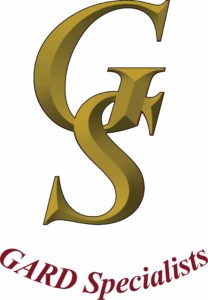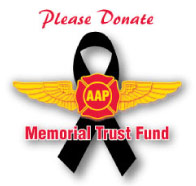We’re about half-way through another season—so far, so good . Maybe time to review that ageless bit of sage advice from legandary Air Attack coordinator Smokey Vallesillo. Let’s make sure we all get the chance to share a few stories at Reno in January and say:
“It Wasn’t Too Bad”
By Smoky Val
We responded to a fire in Banning Pass during a storm with winds 55 mph. Shortly after lift-off it felt like we actually hit something over the mountains north of Hemet. “What the hell was that?” “That was a wind sheer.” “Shit, I thought the airplane was going to come apart— but I guess it wasn’t too bad.”
Over the fire now; God it’s rough! I keep hitting my head on the overhead. We have a Lead plane and two Air Tankers. Gee, that first drop was way off. I guess next time they better move over at least two wing spans, but I guess it isn’t too bad. No one said anything about that turbulence.
This is one of my first fires flying Air Attack and I figured this is the way things are done, or I’m sure someone would have said something by now! Two and a half hours into the fire and we still haven’t done a damn thing with it. Even the helicopter is having a hell of a time, but he says it isn’t too bad. My pilot says he’s getting sick so he sucks up a little oxygen. I’m feeling a little sick myself but don’t say it. After the radios bounced out of the case and I put them back I did get sick and finally said, “Let’s quit and go back to Hemet.” Sure is funny no one seems to mind. Headed back it’s still rough. We even drop the landing gear to slow and descend, that doesn’t help much either. But back on the ground I say, “Well, that wasn’t too bad.”
Once again to a fire on the Los Padres. The Santa Ana winds are blowing hard. Over the fire now and we’re getting blown south about five miles every time we make a 360, gaining and losing about 2000 feet. I check in with the helicopters on the fire: “How is it going down there?” “Well, the winds are pretty squirrelly, but it isn’t too bad.”
Damn, I thought they would want to shut down. I can see dust devils all over the fire area. Guess I’ll wait for the tankers and the lead plane to show up. Hope they hurry. Ah ha, they finally got here! “O.K., lets work on the left flank upper side of the fire.” “Now let me know if you can do it. Fine if you can, if not, we can call it off. O.K.?” After two drops I contact the lead plane and ask, “What do you think?” He responds, “Well, it isn’t too bad.”
Hmmm! Well, what the hell.
 I hear the pilot on the first tanker call the other one: “God! I hit about 4 gs on that one! Watch it when you come across the ridge.” I tell them to load and return. Damn, I guess I’ll have to stay here now. I check with the helicopters again and tell them to shut down if it gets too bad to fly. “Be safe,” I say. After about another ten minutes I say, “I’m shutting down.” Amazing how quickly all the others shut down too. And they had said, “It wasn’t too bad”.
I hear the pilot on the first tanker call the other one: “God! I hit about 4 gs on that one! Watch it when you come across the ridge.” I tell them to load and return. Damn, I guess I’ll have to stay here now. I check with the helicopters again and tell them to shut down if it gets too bad to fly. “Be safe,” I say. After about another ten minutes I say, “I’m shutting down.” Amazing how quickly all the others shut down too. And they had said, “It wasn’t too bad”.
This confirms my suspicions, so I contact the IC and advise him that we’re shutting down and returning to Goleta. Once we get close to the coast line the airplane does anything it wants to. All we can do is hang on for dear life until it’s over. Now we know it was a wind shear. Later at the bar, after a few beers, the tanker pilots tell me, “Shutting down was the best Goddamn thing you could have done today. It was the shits out there!” I wondered why no one had said that to me over the fire. A few more beers, and I ask the Goleta Air Attack, “Why in the hell weren’t you over the fire, asshole? I had to come all the way from Hemet.” What he said didn’t surprise me. He said, “I was flying the fire, but it was so rough I shut down and came home. They told me if I wouldn’t fly the fire, they would get someone else; I guess that’s why you’re here!” But after a few more beers we all decided it wasn’t too bad.
The next morning they wanted us to fly the fire again, but after yesterday no one seemed to be in a hurry to go. I finally convinced them to check with the local lookout near the fire to see what the wind speeds were. They called back, lookouts reporting 60 to 65 with gusts to 75 mph. I get scared all over again and tell them we’re not going until the winds die down – but now it isn’t too bad. I guess I could go on and on.
I still drink too much and I can’t keep my hair from turning gray. Ever wonder why we do the things we do? Let’s take last year’s fires in the fall. Here we had the Santa Ana winds blowing again (mild, they say) so one of the helicopter pilots checks Flight Service. “What did they say?”, we asked. He says, “You don’t want to know! The C-141’s at Norton are reporting moderate to severe turbulence near the mountains, and airliners coming into Ontario are reporting the same over the mountains.” Flight Service is advising, “If you don’t have to fly — don’t.” If a big airplane gets knocked around, can you imagine what it does to the smaller ones?
Oh! Oh! What’s this, one Air Attack and one air tanker to Malibu, and 15 minutes later, one Air Attack and one air tanker to Simi Valley! “Shit!” But they are predicting only “mild”Santa Ana’s; wonder why the C141’s and the airliners are reporting moderate to severe? Oh well, I guess we’ll find out (we always do), and we did. Pt. Mugu was clocking winds at 77 mph, but later, after a few beers at Camarillo, we all said it wasn’t too bad.
It seems kind of funny, in a way; our own manuals (5700) (8300) tell us when winds exceed 30 mph over ridges we shouldn’t be flying over the mountains. I haven’t seen a fire yet that was worth losing anyone on the ground or in the air. I went to the Panorama fire in 1954 and to another big one in 1980. It will always grow back, and burn again, someday. And, when we go back again, we can always meet at the bar later and lie to one another and say, it wasn’t too bad—-
—Smoky Val—











Speak Your Mind
You must be logged in to post a comment.